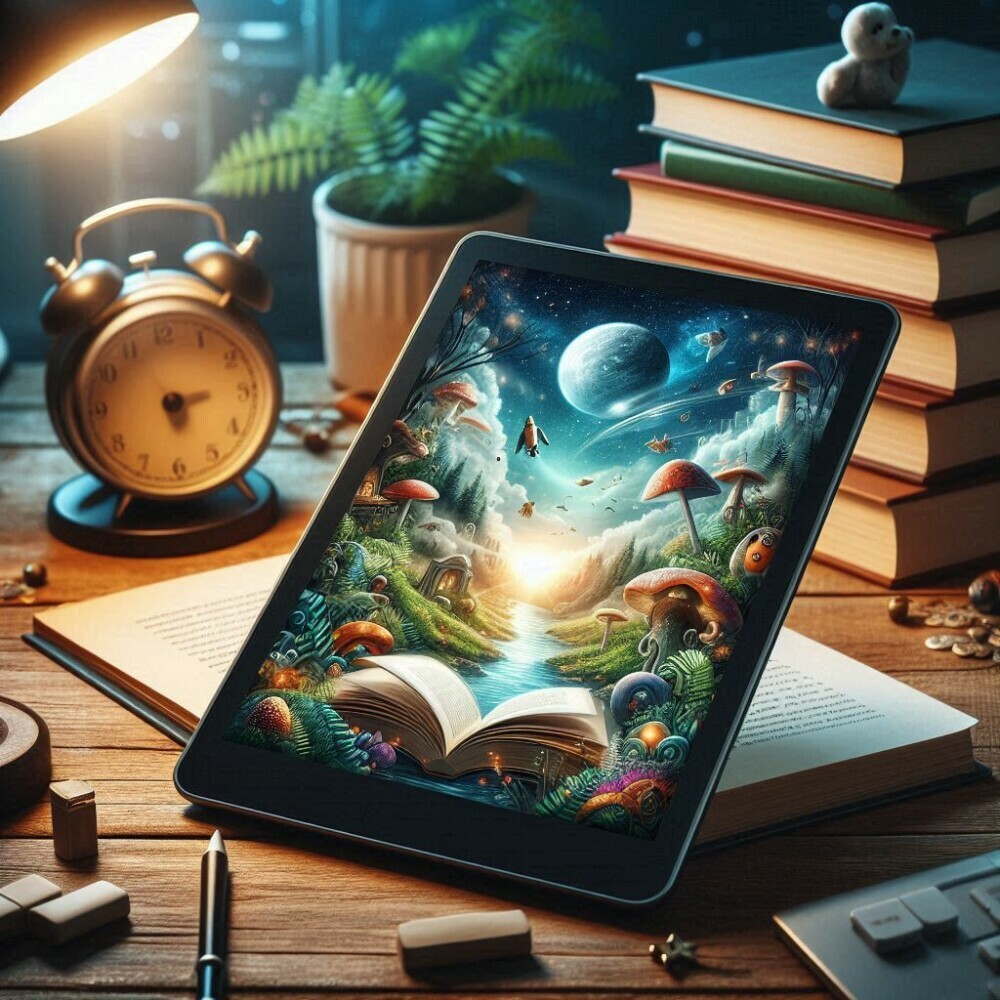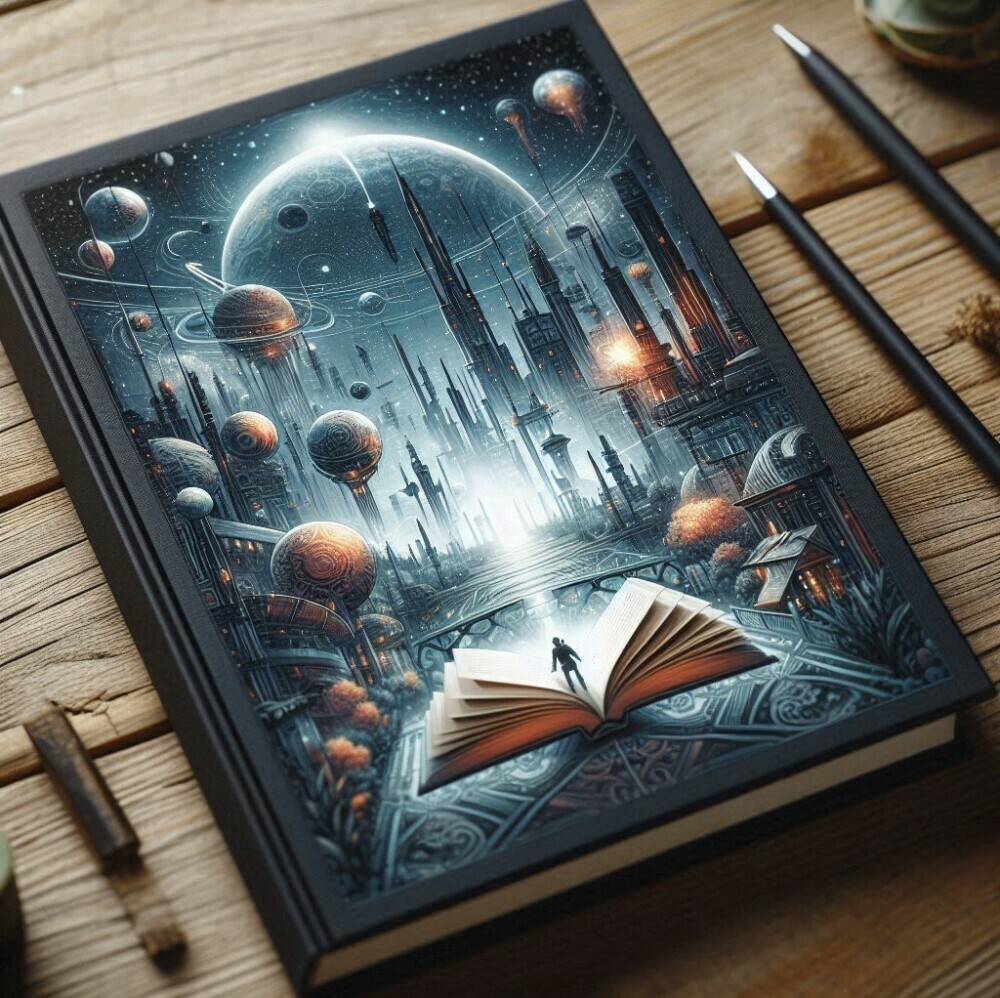
In an ever-evolving digital age, the shift towards electronic forms of reading has highlighted the numerous benefits of ebook readers. These digital devices have revolutionized how individuals consume literature, offering a convenient, portable alternative to traditional books. The importance of understanding these benefits cannot be overstated, as e-readers continue gaining popularity among avid and casual readers alike. This evolution from paper to pixels embodies the blend of technology and literature, making the exploration of the benefits of e-books more relevant than ever.
The upcoming sections of this guide will delve into the various advantages of adopting e-readers, from their unmatched portability and convenience, which allows readers to carry entire libraries in their pockets, to the customization options that enhance user experience. It will also explore the health and comfort benefits provided by features designed to reduce eye strain and allow prolonged reading sessions. Additionally, the discussion will extend to the environmental and economic benefits of ebooks, emphasizing the reduced need for paper and the cost-effectiveness of digital books. Through this comprehensive exploration, readers will gain a deeper understanding of the pros and cons of ebooks and the overarching benefits of e-readers, solidifying their place in the modern reader’s toolkit.
Portability and Convenience
One of the most significant advantages of e-readers is their portability, which allows readers to easily transport a vast library of books in a single, lightweight device. This section explores the facets of portability and convenience offered by e-readers, focusing on easy transportation, the ability to house multiple books in one device, and accessibility from virtually anywhere.
Easy Transportation
E-readers excel in their ease of transport. Unlike traditional books, which can be bulky and heavy, an e-reader is compact and light. This makes it an ideal choice for those who commute or travel frequently. They can slip their device into a purse, backpack, or even a pocket, ensuring they always have their favourite books at hand without the physical burden.
Multiple Books in One Device
The capability to store thousands of books on one device is a game-changer for avid readers. E-readers can hold an extensive collection ranging from classic literature to modern bestsellers, all accessible at the touch of a button. This not only saves space at home but also allows readers to switch between books based on their mood or need without the necessity to physically carry multiple volumes.
Accessible Anywhere
E-readers provide the remarkable advantage of accessing books in any setting. Whether waiting in a queue, travelling on a train, or during a lunch break at work, readers can effortlessly turn on their devices and continue where they left off. Additionally, the availability of e-books through various apps and devices enhances this accessibility, allowing books to be read on phones, tablets, and dedicated e-readers, even without an internet connection. This is particularly beneficial for students and professionals who can utilize travel or downtime effectively by engaging with educational or leisure reading material.
This combination of portability, capacity, and accessibility underscores the convenience of e-readers, making them a superior choice for the contemporary reader who values efficiency and practicality in their reading habits.

Customization and User Experience
Ebook readers offer a range of customization options that significantly enhance user experience by catering to individual preferences and needs. These features not only make reading more enjoyable but also more accessible to a wider audience.
Adjustable Text Size and Fonts
One of the fundamental benefits of ebook readers is the ability to adjust text size and font settings. Users can choose from predefined sizes such as XX-Small to XX-Large, which helps cater to various visual preferences and needs. This customization is crucial for those who require larger text for comfortable reading or those who prefer smaller fonts to maximize page views. Additionally, some e-readers allow modifications to font styles, transforming the readability by switching between serif and sans-serif fonts depending on the reader’s comfort.
Built-in Dictionaries and Search Functions
Ebook readers are equipped with built-in dictionaries and search functions that enhance the learning experience. Readers can easily look up the definitions of words without leaving the page, fostering a seamless reading flow. This feature is especially useful for non-native speakers or students who are keen on expanding their vocabulary. Moreover, the search function allows users to quickly locate text within the ebook, making it easier to reference and recall information efficiently.
Interactive Elements and Annotations
Interactive ebooks provide a dynamic reading experience by incorporating elements such as audio, video, and hyperlinks. These features engage different learning styles and can significantly enhance the comprehension and retention of information. Readers can also interact with the content through annotations, note-taking, and highlighting, which are invaluable for students and professionals who use ebooks for educational and research purposes. The ability to share notes or discuss insights directly within the ebook environment supports collaborative learning and adds a layer of interactivity that traditional books cannot offer.
These customization features not only make reading more engaging but also adapt to the diverse needs of users, ensuring a more personalized and satisfying reading experience.
Health and Comfort
E-book readers offer significant health advantages, particularly in reducing eye strain and enhancing overall reading comfort. Users experience less visual fatigue with E-ink displays, which mimic the appearance of ink on paper and are easier on the eyes compared to backlit screens.
Reduced Eye Strain
E-ink technology, used in devices like Amazon’s Kindle and Barnes & Noble’s Nook, reflects light like traditional paper, reducing glare and eye strain. This technology is beneficial in bright environments, where it prevents the light from shining directly into the eyes, making it easier to read without causing discomfort. Conversely, LCD screens, despite advancements such as IPS technology and anti-glare filters, still direct light towards the eyes, which can increase visual fatigue, especially during prolonged use.
Read Aloud and Night Mode Features
Modern e-readers also come equipped with features like Read Aloud and Night Mode, which further cater to health and comfort. Night Mode, in particular, adjusts the screen’s brightness and reduces blue light exposure, which is known to interfere with sleep patterns. This mode is especially useful in low-light conditions, helping to minimize eye strain and maintain natural sleep cycles. Additionally, the Read Aloud function can provide a restful experience by allowing the eyes to relax while listening to the content, making e-readers a versatile choice for various reading preferences and needs.
These features collectively enhance the usability of e-readers, making them a preferable option for those who spend significant time reading or require flexible reading solutions to accommodate their health needs.

Environmental and Economic Benefits
Eco-Friendly
E-readers present a significant environmental advantage primarily due to their paperless nature, which directly contributes to reducing deforestation and the associated carbon emissions from paper production. A single e-reader can hold thousands of books, significantly diminishing the need for physical copies. For instance, producing a traditional book generates approximately 7.5kg of CO2, whereas the carbon footprint of an e-reader is about 168kg. To equate the environmental impact of one e-reader, one would need to read between 22-23 books digitally. Considering the longevity of e-readers, which can last for years, the potential for reducing individual carbon footprints is substantial. Additionally, e-readers help in minimizing the waste associated with unsold physical books, which often end up being destroyed or recycled at further environmental costs.
Cost-Effective in the Long Run
From an economic perspective, e-books offer substantial savings over printed books due to lower production costs. There are no expenses related to printing, shipping, or storage, and the risk of unsold inventory is virtually eliminated. This efficiency allows for e-books to be priced lower, making them more accessible and affordable. Consumers can often find digital books priced significantly less than their physical counterparts, especially with frequent promotions and discounts. For avid readers, the initial investment in an e-reader can be quickly offset by the lower cost of purchasing digital books. Moreover, the ability to download books instantly further enhances the value proposition, providing immediate access without the wait or extra cost of shipping.

Conclusion
Throughout this guide, we have thoroughly examined the multifaceted advantages of e-readers, underscoring their transformational role in today’s reading habits. From the unparalleled convenience and customization options they offer, allowing readers to carry entire libraries in their pockets and adjust reading settings to their preference, to their significant contributions towards environmental sustainability and economic efficiency. These digital devices not only enhance the accessibility and enjoyment of reading for individuals but also present a compelling case for a more eco-conscious and cost-effective approach to consuming literature in the digital age.
Moreover, e-readers’ health-friendly features, such as reduced eye strain through E-ink technology and customizable reading modes, cater to the well-being of users, marking them as a preferable choice for prolonged reading sessions. The exploration of these benefits reaffirms the significance of e-readers in fostering a more inclusive, sustainable, and reader-friendly environment. As we continue to navigate the evolving landscape of digital reading, the widespread adoption of e-readers promises to redefine our reading experiences, making literature more accessible and enjoyable for everyone.
FAQs
1. What advantages do ebook readers offer?
Ebook readers are cost-effective, convenient, and portable, making them an environmentally friendly choice. They provide a range of customization options, accessibility features, and multimedia elements that traditional printed books do not offer.
2. What are some drawbacks of using eBooks?
One major drawback of eBooks is their inability to provide the tangible, aesthetic pleasure that comes with owning a collection of print books. Although digital libraries are convenient and save space, they lack the emotional connection many readers develop with their physical books and bookshelves.
3. What are some alternatives to Kindle for ebook reading?
For those seeking alternatives to Kindle, consider the Kobo Libra 2 as the best overall alternative. The Nook Glowlight 4e is excellent for dedicated ebook reading, while the Boox Note Air 3 serves as a premium alternative. For a versatile all-purpose option, the Apple iPad (10th-gen) is highly recommended.
4. Is it possible to read eBooks on an Android phone?
Yes, you can read eBooks on an Android phone using Google Play Books. This app allows you to download and read eBooks on multiple devices, upload your own ebook files, and even print books.
I thoroughly enjoyed reading your comprehensive guide on the benefits of e-readers! You’ve eloquently highlighted how these devices are transforming the way we consume literature in the digital age. I especially appreciate how you covered everything from their unmatched portability and convenience—carrying an entire library in my pocket sounds like a dream!—to the health benefits of reduced eye strain with E-ink displays. The environmental advantages of going paperless are also compelling, making e-readers not just a practical choice but a sustainable one too.
I’m curious, though, are there any emerging trends or features in e-readers that you think will shape their future even more? For instance, do you see advancements in interactive reading experiences or new technologies that could further enhance the user experience?
Hey Don,
You raise an excellent question about emerging trends and future advancements in e-reader technology. As someone who closely follows the industry, I’m really excited about some of the innovations on the horizon.
One area I’m particularly intrigued by is the potential for more interactive and immersive reading experiences. While e-readers have traditionally been focused on replicating the simplicity and distraction-free nature of physical books, I could see future models incorporating features like dynamic page layouts, embedded multimedia content, and even augmented reality elements to enhance comprehension and engagement.
Additionally, I anticipate continued improvements in display technology, potentially including color E Ink screens, higher resolutions, and even flexible/foldable panels. These advancements could open up new use cases and reading experiences beyond just text-based content.
Sustainability will also likely be an even greater priority, with e-reader manufacturers exploring ways to reduce their environmental footprint through the use of recycled materials, improved energy efficiency, and potentially even integration with renewable energy sources.
It’s an exciting time for the e-reader industry, and I’m eager to see how these devices continue to evolve and shape the future of literature consumption. Please let me know if you have any other questions – I’m always happy to discuss the latest trends and innovations in this space.
Marios
Thanks for the great article. It’s really informative and offers so many benefits to owning an e-book reader. I know some people love real books and having a collection but I’m a minimalist, so e-book readers are my perfect solution. I love being able to adjust the font size and brightness to suit me. I also find buying e-books cheaper than hard copies. I’m my mind they are a win win for me.
Hey Lyn,
I’m glad you found the article informative and beneficial for your preference for e-book readers as a minimalist. The ability to customize font size and brightness to your liking, along with the cost-effectiveness of purchasing e-books compared to physical copies, makes e-book readers a practical and convenient choice for many readers. The versatility and space-saving nature of e-readers truly offer a win-win solution, catering to individual preferences and enhancing the reading experience. Enjoy your reading journey with your e-book reader!
Marios
Honestly the first time I had an ebook reader it changed my life! I received one from Amazon when I was at university. And I never looked back since! It enables me to get several books in one device, and it’s also eco-friendly. And ebooks are cheaper as well! I only get real books now when it’s impossible for me to get the ebook version.
That’s amazing! It’s great to hear that an ebook reader had such a significant impact on your reading habits. The convenience of carrying multiple books in one device is definitely a game-changer. And you’re right, it’s a more eco-friendly option too. Not to mention the cost savings! Interestingly, you still prefer to get physical copies of books when the ebook version isn’t available. Do you think there’s something special about holding a physical book, or is it more about supporting authors or bookstores?
M.
This guide on e-readers is a fantastic exploration of why these devices are changing the game for readers. I’m especially impressed by the detailed look into the portability, customization, and health benefits that e-readers offer. Plus, the environmental and economic advantages are crucial points that really underscore the impact of switching to digital.
I appreciate the practical advice on using tools like adjustable text sizes and built-in dictionaries, which make e-readers so versatile. Overall, this guide provides a comprehensive view of why e-readers are becoming such a popular choice for readers everywhere. Great job on combining practical benefits with insightful analysis!
Thank you for the wonderful feedback on our e-reader guide. I’m thrilled to hear that you found the exploration of these devices to be so fantastic and comprehensive. Highlighting the key advantages like portability, customization, and health benefits – as well as the environmental and economic factors – is crucial for helping readers understand the full impact of transitioning to digital reading.
The practical tips on leveraging features like adjustable text and built-in dictionaries are an important part of showcasing the versatility of e-readers. Combining that hands-on guidance with the insightful analysis creates a well-rounded resource that can really help readers make an informed decision.
I appreciate you taking the time to share your thoughts. Feedback like this lets us know we’re hitting the mark in providing a thorough, compelling case for why e-readers are becoming such a popular choice. Thank you for the kind words!
M.
Hi!
While I often like the feel of a real bound book in my hands, I have also enjoyed the benefits of using an e-reader. I have most used a Kindle, either with Paperwhite, Kindle Fire, or now as an app on my android phone and tablet.
This guide does an excellent job of highlighting the diverse benefits of eBook readers. As someone who loves the convenience of carrying a whole library in my pocket, I appreciate how this article breaks down the advantages so clearly, especially the environmental impact and cost savings over time. The discussion on reduced eye strain with E-ink technology is particularly relevant for those of us who spend long hours reading. It’s great to see such a comprehensive overview that covers everything from portability to health benefits. Definitely makes a strong case for anyone considering making the switch from print to digital!
– Scott
Hi Scott, thanks for sharing your thoughts on e-readers! It’s great to hear that you’ve enjoyed using your Kindle devices and apps and appreciate their convenience and benefits. Your point about reduced eye strain with E-ink technology is especially well-taken, as it’s a feature that can make a big difference for avid readers.
Marios
This is a great guide for eBook readers! I was surprised actually by the benefits you mentioned, especially the portability and convenience, to be honest, I have never thought of it like that I feel silly haha. Being able to carry an entire library in one device is just fantastic. But I’m curious, how do you find the readability of e-ink screens compared to traditional paper? I worry about eye strain since I do a lot of reading. Any tips that might help keep my eyes healthy while reading would be amazing for sure!
However, the customization options like adjustable text sizes are really cool, and I believe it might help to improve readability and keep less strain on the eyes, no? Because a few friends have mentioned how helpful these features are, but I’m still a bit nostalgic for the feel of physical books. Do you think the interactive elements and built-in dictionaries make up for that?
But anyway if I want to choose one thing that’s been on my mind is the environmental impact. It sounds like e-readers are better in the long run, still I’m wondering about the initial carbon footprint. Have you come across any recent updates or tips to help reduce this?
Thanks for this blog post, it’s given me a lot to think about and might just be the push I needed to finally switch to an e-reader!” was way better!
Hi there! Thanks for your great comment! I’m glad you found the guide helpful. E-ink screens are designed to mimic the experience of reading traditional paper, so you should see them much easier on the eyes. The absence of backlighting and the way the ink reflects light can help reduce eye strain.
Customization options like adjustable text size and font are definitely helpful for improving readability.
As for environmental impact, while e-readers are generally better in the long run, the initial carbon footprint can be higher. However, you can take steps to reduce this, like buying a used e-reader or choosing a model with a longer lifespan.
I hope this helps! Let me know if you have any other questions.
M.
Hello Marios,
I read your article on the benefits of ebook readers with great interest. You did an excellent job highlighting the key advantages these devices offer readers today, from portability and capacity to customization options and accessibility features. As an avid reader myself, I appreciate how e-readers have transformed my own reading experience.
That said, I think the discussion could benefit from acknowledging some of the potential drawbacks of digital reading. While e-readers provide unparalleled convenience, some readers still prefer the tangible pleasure of holding a physical book. The emotional connection one develops with a home library or cherished books cannot always be replicated digitally. I use both print books and e-readers, enjoying the unique benefits of each.
Additionally, it may be worth noting that despite the cost savings of ebooks themselves, the upfront investment in a quality e-reader can be prohibitive for some readers. While e-ink displays help reduce eye strain, reading on any screen for prolonged periods can cause fatigue or discomfort for some. Providing tips for optimizing e-reader settings and taking regular screen breaks could further strengthen the health benefits you cited.
Overall, you’ve provided a well-researched look at why e-readers have become so popular. I think your article would resonate with even more readers by acknowledging some of the potential limitations in a balanced way. Let me know if you would like to further discuss e-reader pros and cons or if you have any other questions! I’m always happy to exchange perspectives on the evolving world of digital reading.
All the Best,
Eric
Hello Eric,
Thank you for your thoughtful feedback on my article about the benefits of ebook readers. I appreciate you taking the time to share your perspective as an avid reader yourself. You raise some excellent points about the potential drawbacks of digital reading that I should have addressed more thoroughly.
You’re right that physical books’ emotional connection and tactile experience cannot always be replicated digitally. Many readers still prefer the feeling of holding a book in their hands. The upfront cost of a quality e-reader can be a barrier for some, even if ebooks offer cost savings over time.
I will incorporate these nuances into any future articles on this topic. Providing a more balanced view that acknowledges both the advantages and limitations of ebook readers will make the discussion more comprehensive and relatable for readers. Thank you again for the thoughtful feedback – it will help me strengthen my coverage of this evolving area of reading technology.
Please feel free to reach out if you have any other thoughts or insights to share. I’m always eager to learn more from passionate readers like yourself.
Best regards,
Marios
I agree that this is an extremely convenient way to keep up with all the literature in which one is interested. Although I do use an e-reader I also enjoy reading hardcover books and magazines as well. Having multiple books on one device does save space. You have certainly provided numerous advantages to using e-readers. I will continue to use both online and offline sources as I really am an avid reader. Appreciate the details, many of which I was unaware, of e-readers.
Hey there,
I’m glad you found the advantages of e-readers helpful! It’s great that you enjoy both digital and physical reading formats. E-readers offer convenience and space-saving benefits, while physical books and magazines provide a unique tactile experience. I appreciate you taking the time to share your thoughts.
Marios
I have always loved to read and have a large collection of hard cover and soft cover books. You discuss so many benefits to having an ebook reader that I’ve never considered! I often have 2-3 books on rotation at any given time. I don’t like to carry this many books around with me though. It would make it so much easier having these on the ebook device when I travel or am waiting for an appointment. The built in dictionary and search feature is a huge bonus! Your information on ebook readers is definitely making me think of buying one now- thank you!
Hey there,
That’s fantastic! An e-reader would be a perfect fit for your reading habits. Carrying multiple books without the weight, plus the dictionary and search features, makes a difference. I’m so glad the information was helpful, and I hope you enjoy your e-reader if you decide to get one!
Marios